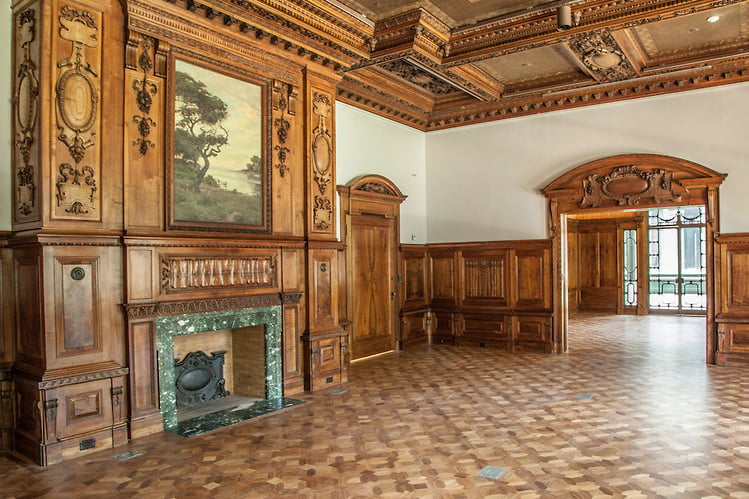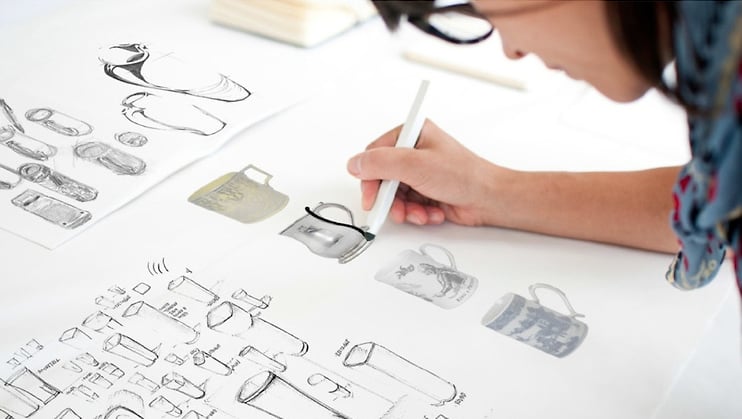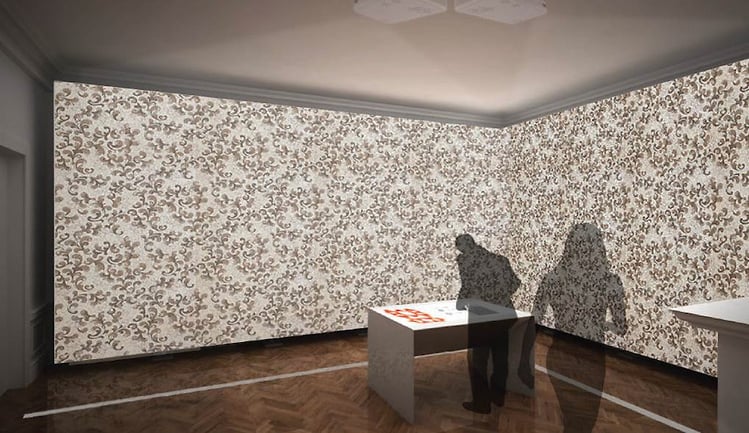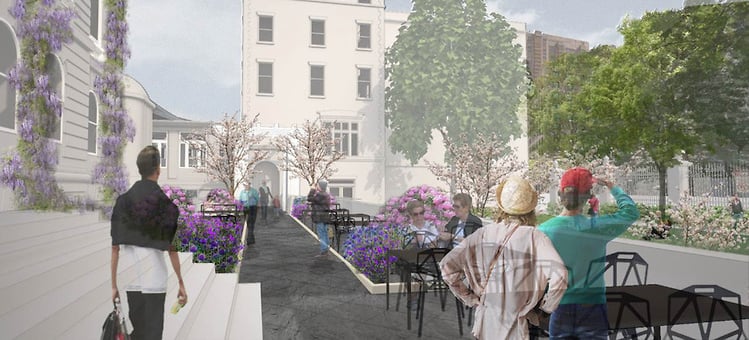Art World
Cooper Hewitt Museum Bets on Interactivity
The Smithsonian's revamped design institution opens back up December 12.

The Smithsonian's revamped design institution opens back up December 12.

Sarah Cascone

The finish line is finally approaching for the Smithsonian’s Cooper Hewitt, Smithsonian Design Museum, which reopens December 12, exactly 112 years from the day that Andrew Carnegie first moved into the Upper East Side mansion. The historic building has gone through an ambitious three-year expansion and renovation that tapped the expertise of a dozen design teams. artnet News attended a preview to get an early peek at the revamped institution, which adds 60 percent more exhibition space and encourages an interactive, hands-on visitor experience where one can create, not just look.
“The use of an old building for a modern purpose is the essence of urban recycling,” said director Caroline Baumann this morning in her introductory remarks, quoting one of her predecessors, Lisa Taylor, the first to have led the Cooper Hewitt in its current home. Three years of painstaking cleaning, conservation, restoration, and rebuilding have transformed the former Carnegie mansion, completed in 1902, into a modern institution.
While the building’s historic detailing has been respectfully preserved, the institution is now slated to offer a truly participatory experience for visitors, who are invited to engage with design on multiple levels. The renovated building has a more open floor-plan that will better showcase its collection and temporary exhibitions. The institution has also unveiled a re-branded logo with a new font and a new name, dropping the hyphen in “Cooper-Hewitt” and swapping in “Smithsonian” for “National.” It is henceforth known as the Cooper Hewitt, Smithsonian Design Museum. In the spirit of the museum’s new commitment to fostering creativity and design, the new Cooper Hewitt font, designed by Chester Jenkins of Village, is available to download for free.

The Enid and Lester Morse Gallery, formerly Andrew Carnegie’s dining room, at the Cooper Hewitt.
Photo: James Rudnick, Courtesy the Cooper Hewitt, Smithsonian Design Museum.
One of the main benefits of the renovations is that the museum can now remain open year-round, whereas before it often had to close its doors during the installation of temporary exhibitions. A new freight elevator has been installed, with a specially-hinged, 2,000-pound wall panel in the entrance lobby that opens to allow large-scale works to be quickly and easily transported. The third-floor ceiling paneling also hinges outward for the same purpose.
An impressive slate of inaugural exhibitions has been planned, with shows that draw on the museum’s storied past, as well as both the history and future of design. The collection of the institution’s founders, sisters Sarah and Eleanor Hewitt, will be showcased, and a special exhibition will pay tribute to Lockwood de Forest, a master of the late-19th and early-20th-century Aesthetic Movement, who designed the mansion’s opulent teak room. The permanent collection, which includes some 200,000 objects spanning 30 centuries—its oldest piece is an Egyptian goblet from 1100 BCE—will be permanently on display on the second floor, and a Process Lab on the first floor will provide a hands-on approach to understanding design.
The third floor will be open to the public for the first time ever. The space that formerly housed the museum’s research library (which has moved into nearby townhouses on 90th Street) now contains 6,000 square feet of temporary exhibition galleries. During Carnegie’s day, the steel magnate used the space as a gymnasium to practice his golf putting, and as part of today’s preview, the museum installed a mini-golf green in the space. Though breakfast was served, Baumann opted not to offer Carnegie’s preferred repast of oatmeal, baked apples, and chicken.

The Cooper Hewitt’s new pen in action.
Photo: Courtesy the Cooper Hewitt, Smithsonian Design Museum.
During her remarks, Baumann held up a chunky-looking pen, which she promises will completely transform the visitor experience at the Cooper Hewitt by emphasizing both learning and making. Each visitor will be given one of the electronic pens, which can be used to discover more about museum objects, saving information and images about them into a personalized account. An impressive piece of functional design itself, the pen was conceived by Local Projects with Diller Scofidio + Renfro, and designed by GE, Sistel Networks, and Undercurrent.
The pen is also an integral part of the museum’s new Immersion Room, which allows visitors to digitally explore the Cooper Hewitt’s extensive wallpaper collection, projecting the designs onto the walls. This solution addresses the difficulties of displaying the wallpaper while also creating an interactive experience that allows visitors to design and display artworks of their own, based both on their own ideas and from pieces on display elsewhere in the museum that they’ve saved to their pens, which can be traced to create new images. Museum-goers can then access everything they’ve collected or created when they go home, as well as during return visits. The museum cites its original 1897 mission statement, which called for a museum “for anyone who wanted to use it as a place to work and learn,” as inspiration for the new initiative.

Rendering of the Immersion Room at the Cooper Hewitt, designed by Diller, Scofidio + Rendro and Local Projects.
Photo: Courtesy the Cooper Hewitt, Smithsonian Design Museum.
Perched near the northern end of Museum Mile, overlooking the Central Park reservoir at 91st Street, the museum traditionally hasn’t drawn the biggest crowds, but the hope is that this will change. The last 12 months before the Cooper Hewitt shuttered, the museum saw an above-average 225,000 visitors thanks to the popular “Set in Style: The Jewelry of Van Cleef & Arpels” exhibition. The target going forward is 500,000 per year, which would surpass the 420,000 people who stopped by the nearby Frick Collection, similarly housed in a Beaux-Arts mansion, in 2013. In comparison, the neighboring Guggenheim saw 1.2 million visits in that time.
Beginning December 12, the museum will be open daily from 10 a.m. to 6 p.m., with extended, pay-what-you-wish hours from 6 p.m. to 9 p.m. on Fridays. General admission will cost $18, with senior and student tickets going for $12. Children under 18 will be able to enter for free. Visitors will also be welcome to stop by the museum in the early morning, when the cafe, gardens, and gift shop will be open and free to the public from 8 a.m. to 10 a.m.

Rendering of the Arthur Ross Terrace and Garden at the Cooper Hewitt, designed by HOOD Design.
Photo: Courtesy the Cooper Hewitt, Smithsonian Design Museum.